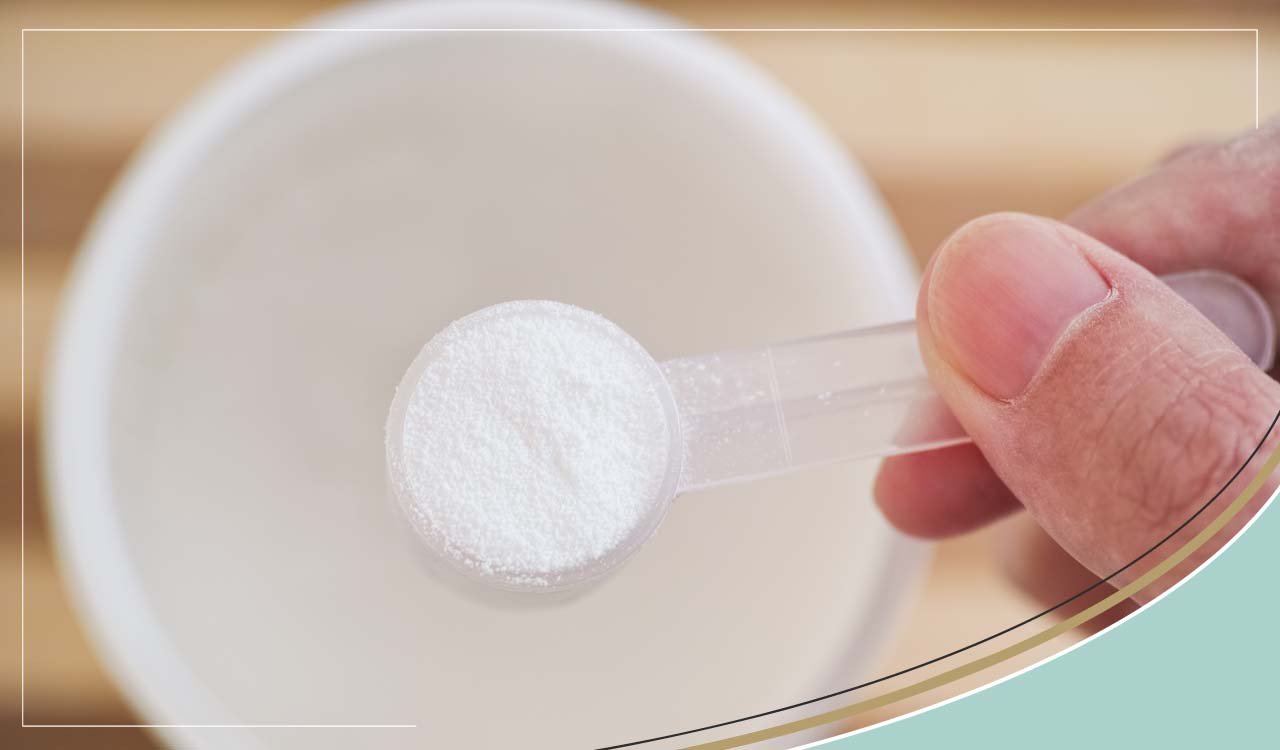What is D-Ribose? Uses, Benefits, Dosage & Studies

D-Ribose in a naturally occurring sugar, present in all living cells and an essential part of the respiratory, skeletal and nervous systems. It is a key component in many biological pathways including producing energy and a structural component of RNA and DNA. Ribose exists in two forms, L-ribose which is the synthetic unstable form, and D-ribose, used in supplement form to reduce fatigue and improve athletic performance. D-ribose is naturally produced in the body from glucose metabolism, however in some individuals the sequence of chemical reactions by which it is formed is impaired, leading to an increased requirement through the diet. Supplementation can also be useful during times of high energy exertion such as exercise or illness as D-ribose is best known for its role in ATP production, the main storage and transportation unit of energy for muscle contraction and nerve impulse propagation (the messages sent to the brain).
ATP - The energy currency
D-ribose is key for adenosine triphosphate (ATP) production, the main energy source of every cell in the body. Within each cell of the body, mitochondria exist to generate this energy from sugar molecules. When mitochondria functions well, the body produces a steady supply of energy to power our everyday needs, for example brain function and muscle activity. However in cases where energy requirements are excessively high, for example illness, intense exercise, or due to genetic factors, there may be insufficient ATP production. D-ribose is essential for the production of ATP, and supplementation has shown to enhance the energy output of our cells. D-ribose also contributes to energy by acting as a key component of acetyl coenzyme A involved in protein, carbohydrate and lipid metabolism as well as playing a role in energy production.
The influence on heart health
Across the world heart disease remains a major cause of mortality, particularly in developed countries, therefore a large amount of work has been and continues to be done in order to better understand causes, cures and prevention. Studies indicate that D-ribose supplementation may aid preservation of cardiovascular energy levels through increased ATP production. Current results are promising however further research on human physiology must be carried out before D-ribose can be prescribed as a targeted intervention for heart disease.
Making the most of muscle recovery
D-ribose is often used to improve athletic performance and reduce symptoms of cramping, pain, and stiffness following exercise, showing enhanced recovery and rapid replacement of ATP levels and reducing injury on a cellular level in both humans and animals. In a study focusing on young, healthy males, supplementing with D-ribose reduced delayed onset muscle soreness (DOMS) vs a placebo group. The results suggest that, when doses are provided around exercise, supplementation may support the general public in muscle recovery from intense exercise.
Management of chronic pain and fatigue
D-ribose has shown promise in the treatment of fibromyalgia and chronic fatigue syndrome. Studies have shown significantly improved energy levels and overall mood, as well as improvements in sleep quality, mental clarity and pain. Both of these conditions are associated with impaired energy metabolism, hence the reasoning that D-ribose may be supportive by increasing the production of energy in the body, particularly in the heart and muscles. Studies show that the symptoms that improve when supplementing with D-ribose return once supplementation stops, therefore this is considered a long-term support. A common symptom of fibromyalgia is restless leg syndrome, a condition of the nervous system characterised by feelings of discomfort in the lower limbs, followed by an overwhelming irresistible urge to move for relief. This is often worse in the evening and at night, associated with poor sleep triggering additional health concerns. While D-ribose may not eradicate this symptom entirely, it may improve quality of life by potentially reducing severity and progression.
Genetic coding
D-ribose is key for assisting the replication of ribonucleic acid (RNA) and deoxyribonucleic acid (DNA). DNA is the genetic blueprint of the body, carrying all of the information of how a living being will look and function and providing this to each cell. The continuous replication of DNA is required to ensure each new cell, produced during growth and repair of damaged tissue, is equipped with its own copy of the DNA molecule. RNA acts as a translator, taking the genetic code within DNA and converting it to a format used to build proteins. As DNA replicates, RNA must too, therefore the building blocks of these structures must be available for use. D-ribose is the carbohydrate backbone of RNA as well as the precursor for the main structure of DNA, playing a key role in this function of growth and repair.
Dosing and Safety
D-ribose is a substance recognised by the body, used in a series of reactions every moment a body is alive. It has been used to supplement individuals' diets both orally and intravenously but it is generally available in a dry powder form. The recommended dose ranges from 5-15 grams per day, and mixed into water and offering a slight sweet taste. There are very few reported side effects, with some reports of mild diarrhoea, nausea and gastrointestinal discomfort which may be reduced by consuming large amounts of the supplement with or shortly after food. Despite being a sugar by structure, D-ribose does not impact blood-glucose levels in the same way glucose, fructose or sucrose do. However, research suggests D-ribose may increase insulin secretion which lowers blood glucose levels, therefore it is not advised for those with diabetes (type one or two) or hypoglycemia. Due to this impact on blood glucose levels, it is also not advised for those about to undergo surgery or during pregnancy and breastfeeding.
D-ribose, CFS and fibromyalgia - meassociation.org.uk
D-ribose and heart health in practice - pubmed.ncbi.nlm.nih.gov
D-ribose and heart health - ncbi.nlm.nih.gov
D-ribose and mitochondrial function - ncbi.nlm.nih.gov
D-ribose and DOMS - jissn.biomedcentral.com
DNA and RNA structure - technologynetworks.com
 Free Shipping on orders $70+ USD
Free Shipping on orders $70+ USD
 Courier & USPS Deliveries Available
Courier & USPS Deliveries Available
 Read Thousands of Independent Reviews
Read Thousands of Independent Reviews

















